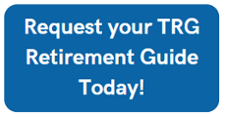What Is A Specialized Small Business Investment Company?
A specialized small business investment company (SSBIC) is a partnership or corporation that finances small business ventures owned by certain disadvantaged persons. An SSBIC must be licensed and operated according to the Small Business Investment Act of 1958. Investment in SSBICs provide certain tax advantages. For instance, gain on the sale of your other investments in publicly-traded securities can be deferred if you "roll-over" or use the proceeds to purchase an interest in an SSBIC. In addition, losses from an SSBIC receive favorable tax treatment.
Caution: Individuals and C corporations are eligible for the tax benefits afforded to SSBIC investors. However, estates, trusts, partnerships, and S corporations are not permitted to defer gain reinvested in an SSBIC.
What Are The Tax Benefits Available Through An SSBIC?
There are two major benefits available to you if you invest in an SSBIC. The first permits you to defer gain on your investments in publicly-traded securities if you reinvest the proceeds in an SSBIC. The second allows you to treat losses from an investment in SSBIC stock as ordinary losses, rather than capital losses, and use them to offset ordinary gains.
Deferral of Gain If Invested In an SSBIC
You may elect to rollover the gain on the sale of your publicly traded securities into an SSBIC. This means that you do not recognize gain on the sale of those securities until you sell your interest in the SSBIC. You are permitted to defer gain to the extent of the cost of the SSBIC interest. The purchase of the SSBIC interest must occur within 60 days of the sale of publicly-traded securities. For any tax year, the deferral or rollover for an individual taxpayer is limited to the lesser of (a) $50,000 or (b) $500,000, less any deferrals allowed in previous tax years under the SSBIC rollover provision. (These limits are reduced for married persons filing separately).
Tip: For a C corporation, the maximum amount of gain that may be rolled over is $250,000 or $1,000,000, reduced by past deferrals.
Tip: In addition to the deferral of gain, an investment in an SSBIC may also qualify as qualified small business stock. This means that when you sell the stock, a percentage of your gain may be excluded from income. See examples below for an illustration of an interest in an SSBIC that is also treated as qualified small business stock.
Caution: The tax benefit afforded to SSBIC investments is the deferral of tax on gain reinvested in the SSBIC. This is not an exclusion. In order to ensure eventual payment of tax, you must reduce your cost basis in the SSBIC investment to the extent of the deferred gain.
Example(s): Say you sell X stock for $100, for a $50 gain. You reinvest this amount into an SSBIC within 60 days. You are not taxed on the $50 gain. Your tax basis in the SSBIC equals cost less the amount of gain you deferred (in this example, cost basis is $100 reduced by $50 of deferred gain). Thus, your adjusted basis in the SSBIC interest is $50.

Ordinary Treatment of SSBIC Losses
You are allowed to take an ordinary (rather than a capital) loss deduction on the sale of an interest in an SSBIC. The SSBIC is also allowed to treat certain capital losses as ordinary. This benefit to the SSBIC may also pass-through to investors in the SSBIC if the SSBIC is organized as a pass-through entity (i.e., as a partnership or an S corporation). In such a case, and subject to the passive loss rules, you can use your share of the losses to offset your ordinary income.
Examples
Tax treatment of your capital gain upon the sale of securities will differ, depending on how and when you reinvest the proceeds.
Gain and Reinvestment in Other Securities
Example(s): Assume you made a prior investment in X stock of $95. You sell X for $195, realizing a $100 gain. The gain is considered long-term capital gain, taxable at 15 percent. You pay $15 in tax and have $180 left (assuming no other variables). You reinvest the proceeds, purchasing 18 shares of Y stock for $10 each. You then sell the Y stock in five years for $20 per share (or $360). The gain on the sale of the Y stock is also taxable at 15 percent (or $27). You have $333 left.
Gain and Reinvestment in an SSBIC That Is Not a Qualified Small Business (QSB)
Example(s): Assume you made a prior investment in X stock of $100. Today, you sell the X stock for $200, realizing a $100 long-term capital gain taxable at 15 percent. You roll over the proceeds into an SSBIC that is not a qualified small business. Since the $100 gain is not taxed, you purchase 20 shares at $10 each, or $200. However, the basis of your SSBIC interest is $200 reduced by the deferred gain of $100--for a tax basis of $100. You hold the SSBIC stock for five years and then sell it for $400, or $20 per share. You have $300 in long-term capital gain. You pay 15 percent tax on this gain, or $45, leaving you with $355.
Gain and Reinvestment in Qualified Small Business Stock--Not an SSBIC
Example(s): Assume you made a prior investment in X stock of $95. Today, you sell the X stock for $195, realizing a $100 long-term capital gain taxable at 15 percent, or $15. You have $180 left and reinvest this amount in qualified small business stock at $10 per share. You hold the stock for five years and sell it for $20 per share, or $360. You have a gain of $180. Assuming 50 percent of your gain on the sale of the qualified small business stock is excluded, you only recognize $90 of gain. This is taxed at 28 percent, or $25.20. You have $334.80 left. (Note: For qualified small business stock issued after February 17, 2009, and before September 28, 2010, the percentage exclusion is 75 percent. For qualified small business stock issued after September 27, 2010, the percentage exclusion is 100 percent.)
Gain and Reinvestment in an SSBIC That Is a Qualified Small Business
Example(s): Assume you made a prior investment in X stock of $100. Today, you sell the X stock for $200, realizing a $100 long-term capital gain that is normally taxable at 15 percent. You roll over this gain into an SSBIC that is also a qualified small business. Since the $100 gain is not taxed, you purchase 20 shares at $10 each, or $200. However, the basis of your SSBIC interest is $200 reduced by the deferred gain of $100--for a tax basis of $100. You hold the SSBIC stock for five years and then sell it for $400, or $20 per share. You have $300 in long-term capital gain. Assuming 50 percent of your gain is excluded, you only recognize $150 in gain. This is taxed at 28 percent, or $42. You have $358 left. (Note: For qualified small business stock issued after February 17, 2009, and before September 28, 2010, the percentage exclusion is 75 percent. For qualified small business stock issued after September 27, 2010, the percentage exclusion is 100 percent.)
Tip: The five-year holding period in the above example is not required for SSBIC stock. Rather, it is a prerequisite for the exclusion of 50 percent (or 75 percent or 100 percent) of the gain on the sale of the Qualified Small Business Stock (QSBS).
